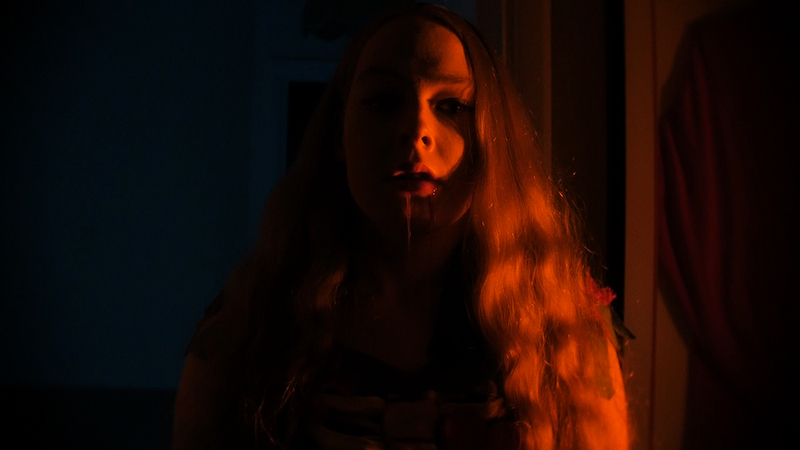Behind violent films lies an acceptance of violence
- 11 July 2019
- Posted by: Michael H Hallett
- Category: Arts , Patriarchy ,

It’s just a film.
The blood leaking out of her mouth isn’t real; it’s ketchup.
Go online and have a look. You’ll find plenty of recipes for fake blood.
The blood may not be real. The violence may not be real. But the underlying acceptance that violence is part and parcel of our world is very definitely real.
This isn’t just an acceptance that others—some indeterminate ‘they’—will commit violence. It includes accepting our own right to be violent to others—that when push comes to shove we have the right to act or react with violence.
That means we, us, the good guys (and we all believe we’re the good guys), have the right to bash them, the bad guys—so the good guys will survive. That’s what happens in all the best films, right?
The first law of patriarchy
The right to violence is the fundamental law of patriarchal societies and their latter-day descendants, modern democracies. They’re founded on the belief that there are more people than resources, making conflict inevitable.
That conflict runs through the stories we’ve been telling ourselves for the past few thousand years, culminating in this Age of Cinema with its potential for the ultra-realistic simulation of violence.
Ever since the invention of cinema just over a century ago, our filmmaking has become progressively more violent. Splatter films emerged in the latter part of the last century, both in the horror genre and in Quentin Tarantino-style comic book action films. In these films the violence was so over-the-top as to be more laughable than believable.
Somewhere along the line—the D-Day landing sequence in Saving Private Ryan perhaps—violence became more realistic as well as endemic. With the rise of the Marvel and DC Comics franchises, violence is now king of the box office.
There is pressure to show more violence to younger audiences. When the Motion Picture Association of America handed Star Wars VII: The Force Awakens a PG-13 rating, some film websites criticised them for trying to protect pre-teen children from the film’s “sci-fi action violence,” labelling the MPAA as “buzzkills.”
What lies beneath
All of this suggests that, as a society, we’re excavating our fascination with violence. Through our increasingly violent films we’re digging down through the layers of our collective unconscious to see what lies beneath. What lies there is our belief in the right to violence; i.e. the right to victimise others.
Through our increasingly bloodthirsty films we’re digging down through the layers of our collective unconscious to see what lies beneath.
The right to victimise is a key component of what I call the Patriarchal Operating System, the acquisitive, consumptive and destructive psychological model that’s crippling humanity and the planet.
How far will we take this right to victimise others? We have the weapons to annihilate not just ‘them’—our competitors for resources—but the planet as well. At the height of the Cold War, psychologist R.D. Laing wrote: “Long before a thermonuclear war can come about, we have had to lay waste our own sanity”—a madness brilliantly portrayed in the 1960s black comedy Dr Strangelove, or: How I Learned to Stop Worrying and Love the Bomb.
That sanity was sacrificed in the name of survival several millennia ago when the collision between growing populations and shrinking food sources (due to spreading desert conditions) created the first patriarchies.
That was then and this is now. The game has changed. We have the technology to change our world into one of co-operation, communication and consideration. To do that requires us to cross a fundamental psychological divide within each of us—to relinquish the first law of patriarchy. When push comes to shove, are you willing to surrender the right to violence?
Our choice will be reflected in the films to come.
Image: Laura Janes in Siriween (Mica Films, 2017)
